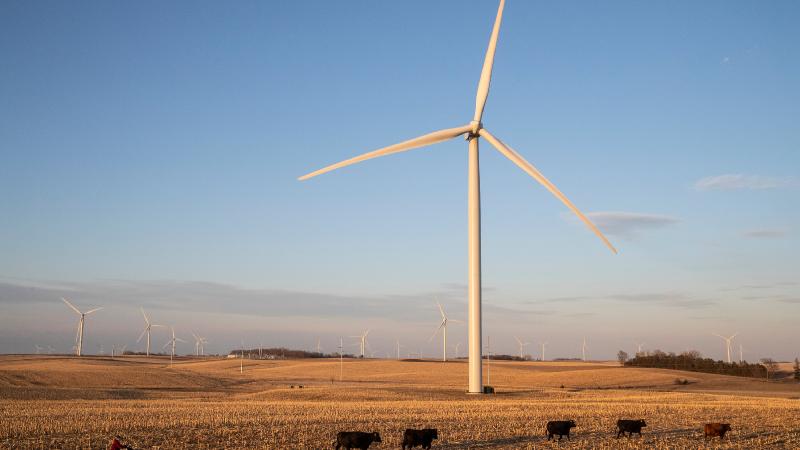Can the Biden Agenda Fix Middle America's Deepest Problem?
By: Neil Irwin (The New York Times)


The country's heartland has been experiencing a demographic 'crisis' for decades. Smaller communities and cities simply cannot sustain themselves with a services economy.
The services economy was based upon the financial model of winners and losers. Balancing the ledger means that some obtaining greater affluence and prosperity requires loss of affluence by others. It's a zero sum game where gains must be balanced with losses. A services economy only transfers wealth, it does not create wealth.
Economic conditions across the heartland have deteriorated so much that the country is running out of losers. Government investments in urban centers aren't producing the dramatic results obtained in the past. When the government money runs out the urban centers begin to stagnate economically. Government investment has created a cycle of boom and bust.
The only way to break the cycle of winners and losers is to revitalize industry in the United States. As China has demonstrated, industry creates wealth. Industrial development makes a country, as a whole, more affluent. That's the impetus for international support of industrial development in poorer countries. Unfortunately the global governmental advocacy for industrial development has been hijacked by free trade liberalization. Free trade is based upon the same financial model of winners and losers to transfer affluence to some at the expense of others.
Domestic industry isn't about international trade. Domestic industry is about creating a sustainable domestic economy. Domestic industry creates the wealth that will sustain the services portion of the economy.
The economic plan proposed by Joe Biden is really an attempt to make the services economy work in the heartland of the country. The proposal is still based upon the financial model of winners and losers. But rebuilding the heartland with a services economy means urban centers must become losers to balance the ledger. The Biden proposal is really about reversing the transfer of affluence and not about revitalizing the means of creating wealth to sustain the domestic economy. The Biden proposal only kicks the can by trying to change who will be winners and who will be losers.

Last week, the Census Bureau said the last decade's population growth was the slowest in generations. Also last week, President Biden addressed Congress and laid out a wide-ranging, multi-trillion dollar economic agenda.
The two developments are tightly related.
For much of the United States, a demographic crisis and an economic crisis are two sides of the same coin. In many cities and regions, a shrinking population reduces the tax base, leading to underinvestment and deterioration of the physical environment and public services, causing even more jobs and people to go elsewhere.
Part of the aspiration of Bidenism — a through-line in the pandemic rescue plan already enacted, and in major proposals for spending on infrastructure and family support — is to break that cycle. Mayors and others focused on the development of places that have experienced economic and demographic languishing see a distinct opportunity to use federal money to fix problems long in the making.
There are inherent tensions. Spending money in places with a fast-growing population typically offers a surer economic return than spending it in those that are contracting.
The economic case for investing in places that have lagged in the modern economy relies on the possibility of reversing those negative trends and unlocking new growth. Many of those directly involved in that effort are downright giddy with the possibility that they can seize this moment to prepare their cities and towns for the future.
"If you spend hundreds of billions of dollars over the next 10 years, it sounds like an awful lot of money," said Steve Williams, the mayor of Huntington, W.Va., a city of 45,000 people — down from 50,000 in 2010. But after what he views as decades of underinvestment, and considering the potential long-term payoff, "it's just a pittance," he said.
"We're talking about investments that will last for 50 years and prove to be transformative to our communities," Mayor Williams said. He is particularly enthusiastic about efforts to invest in highways, clean water infrastructure, and broadband in Huntington and across Appalachia.
Even assuming the Biden proposals make it through a narrowly divided Congress, there is no assurance of success. The long-declining communities face a complex web of problems, some of them a result of powerful economic forces — like outsize rewards for technologically savvy workers who congregate in large cities — that aren't going away.
"I'm going to give the Biden administration high marks for a lot of the individual tactical things they're proposing," said John Lettieri, president of the Economic Innovation Group, a Washington think tank that aims to encourage more economic dynamism in lagging parts of the country. "I worry that everything they're doing will be helpful incidentally and on the margins, but that we need more aggressive and robust strategy and not tactics."
Moreover, there is a risk that even with trillions of dollars being spent, bureaucratic kludge makes the dollars less effective than they might be. Dozens of agencies are involved, and there is no certainty that the money will be spent efficiently and in ways that maximize the chances that struggling places stabilize themselves.
"This administration may be more concerned about declining cities and places than any since the Great Society, maybe the Great Depression," said Mark Muro, senior fellow at the Brookings Institution's Metropolitan Policy Program. "At some point they will need to braid all of this together and manage how these programs interact with each other."
The administration's emphasis partly reflects President Biden's own longstanding instincts. He often invokes growing up in Scranton, Pa.— where the population was in steep decline throughout the second half of the 20th century — as formative in his economic thinking.
But it also reflects evolution among economists and development specialists. Once the predominant thinking was that economically lagging regions and more successful ones would converge over time, and that the government should focus on helping people navigate a changing economy rather than try to save faltering communities.
It has become increasingly apparent that there are big problems when a handful of superstar cities thrive and much of the country struggles. It means vast human potential goes untapped and lots of capital — existing cities and towns — goes underutilized. And it can fuel political polarization and damage democracy, as people in declining regions feel less connected to their more prosperous countrymen.
The debate is often framed as between "people" (policies to help individuals affected by economic change) and "places" (policies aimed at communities that are languishing).
"I don't think we can ignore the role of place in public policy any longer and just allocate investments to people," said Ross DeVol, president of Heartland Forward, a think tank based in Bentonville, Ark. "Because that creates a hollowing out in places that affects the entire country negatively.
"We can't as a nation continue to advance our competitive position by concentrating more knowledge-based industries and research just on the coasts."
This results, Mr. DeVol said, in soaring real estate prices in those coastal markets, as well as underused physical infrastructure and a lack of opportunity in the places left behind.
Federal policy in recent decades has arguably reinforced the disparity.
The federal government itself is based in one of the high-growth coastal metropolises. Nearly half of federal research and development spending in 2018 went to five states — California, Maryland, Massachusetts, New York and Virginia — and Washington, D.C., according to analysis of federal data by Brookings.
The Biden administration's American Jobs Plan incorporates ideas from the bipartisan "Endless Frontier Act," which, among other things, seeks to spend billions to create regional innovation hubs. The idea is to invest in cutting-edge research with potential for commercial spinoffs, worker training and other steps to create the kinds of virtuous cycles of innovation and jobs that already occur in places like Boston.
That could be a boon to places like Lincoln, Neb.
Its population has grown slowly but steadily in recent years; investments in things like high-speed internet have helped it avoid the cycle of decline affecting many other smaller cities in the Midwest. It is home to the University of Nebraska, which has strong programs in computer science and engineering, and it has a vibrant agribusiness sector.
But Mayor Leirion Gaylor Baird says the city still loses young talent to opportunities in bigger cities. She says several elements of the Biden plan could improve things.
A proposed $12 billion in community college spending should help ensure the city has the work force employers are looking for, she said. Plans to build broadband across rural communities could better connect Lincoln and its job opportunities with the rest of Nebraska.
And the financial help for cities and states included in the American Rescue Plan, enacted in March, should allow more basic investments to make the city appealing to young families.
The city has been slowly replacing lead water lines so residents can be confident of safe drinking water, she said, and it now has the prospect of being able to complete that work faster.
"I think there was a sigh of collective relief among mayors of cities this size you could hear around the country" when the American Rescue Plan passed with money for local governments, Mayor Gaylor Baird said. "Everything about this moment feels like it has the potential to be transformational."
Mr. Williams, the Huntington mayor, also cast this as a moment with long-lasting implications. His city, a onetime industrial hub, features a low cost of living and lots of natural beauty, and is the home of Marshall University. It could appeal to workers who see an opportunity to work remotely and are tired of the stresses of bigger cities.
"The growth is going to occur where there is a community that is functional," Mayor Williams said. "Covid was a once-in-a-lifetime pandemic, but it's also a once-in-a-lifetime opportunity as people realize they can work remotely if they have access to broadband and clean water and a safe and solid community."
The infrastructure legislation, he said, could be the jolt that assures people that the city can offer both jobs and amenities — and that it is reversing population loss and economic decline.
"Sadly, when you look at our population losses, individuals have left just because they haven't felt like they had a lot of choice," he said. "My job is to give them a choice."




The only way to break the cycle is to finally acknowledge that services won't sustain the economy. Our domestic economy won't provide a broader prosperity by changing who will be winners and who will be losers. The only way to break the cycle is to revitalize industry in the United States.
The USA is a Colossus among midgets militarily and economically. We manufacture some of the finest planes, medical equipment and high tech. We do not necessarily need to lead the world in children's toys.
Yes, the United States is very good at building stuff so that other countries can bomb each other. The United States just can't manufacture surgical masks or hand sanitizer.
The United States can't manufacture surgical dressings for the wounds caused by American made bullets.